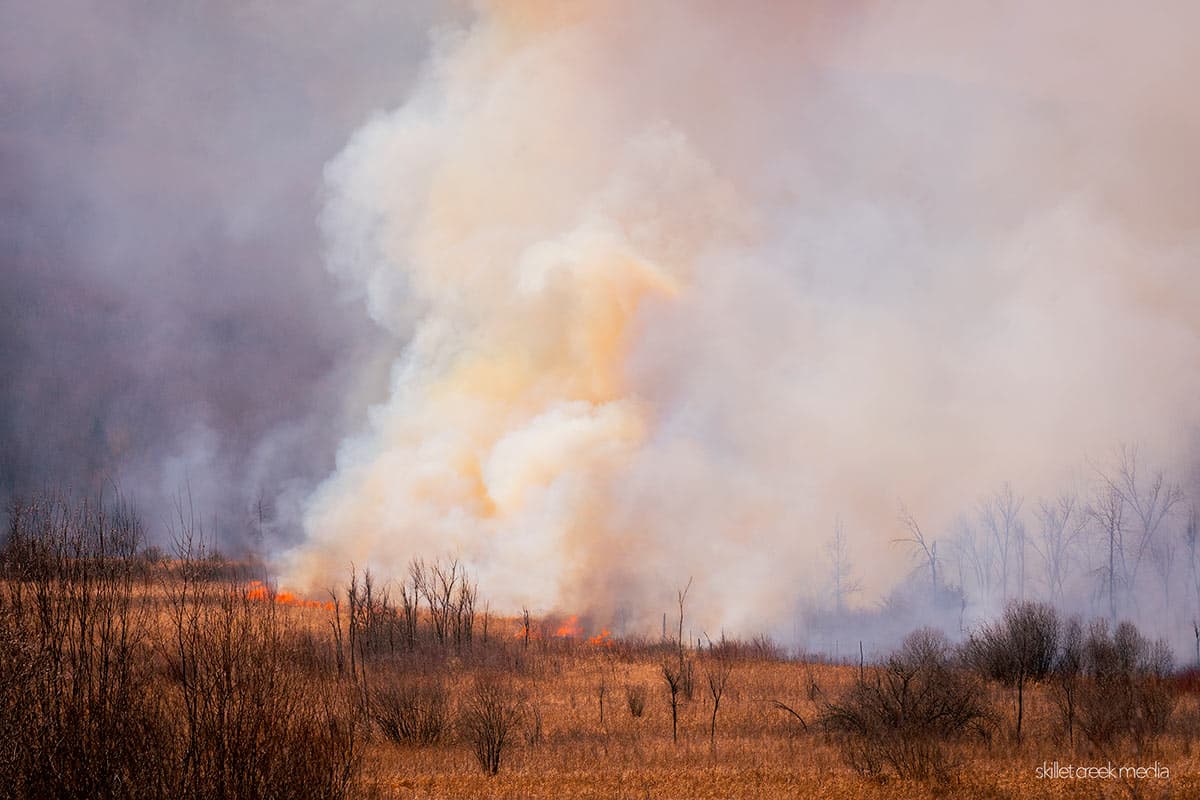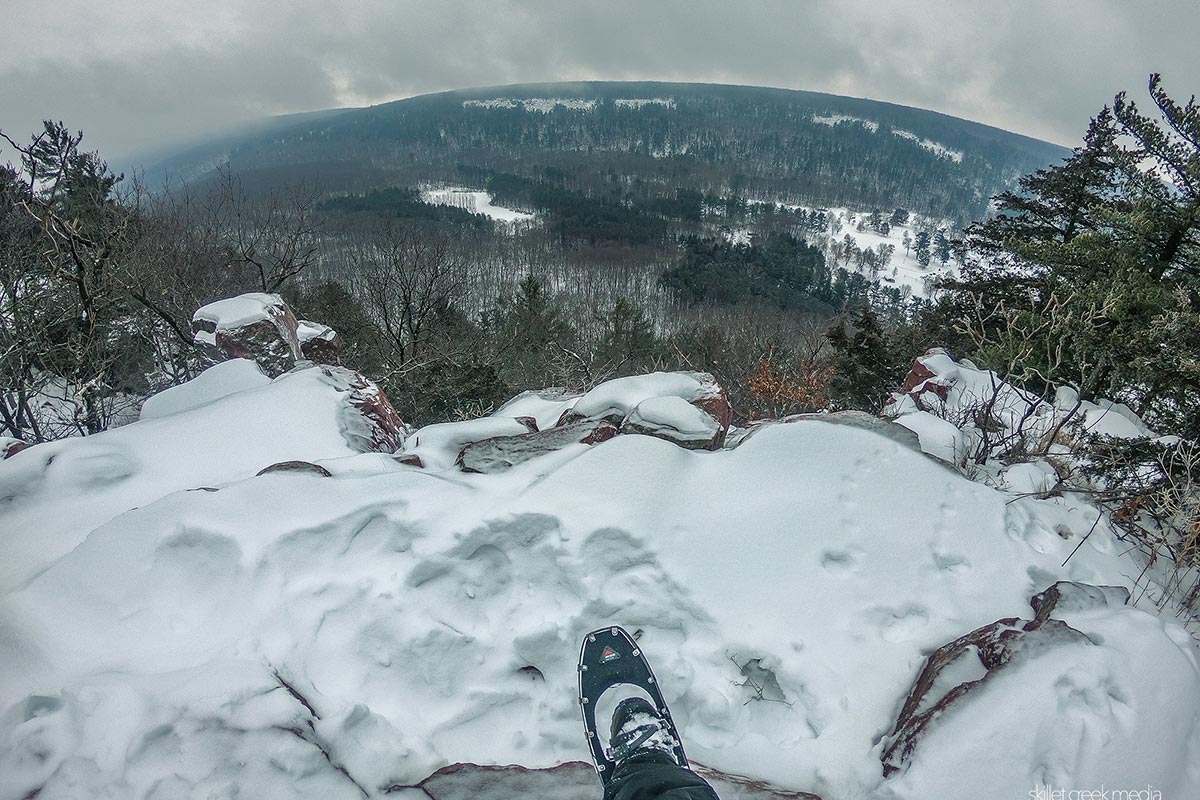Severe storms rolled through our area yesterday afternoon, but fortunately, there wasn’t too much damage…

Just after Halloween, we took advantage of the late-season warmth to ride the Elroy-Sparta State Trail north from Kendall, Wisconsin up to the first of 3 historic train tunnels which are some of the main attractions on the Elroy-Sparta. Of course, it was now November and as expected, the tunnels had just been closed for the season. That meant we’d be turning around and enjoying a fast 9-mile ride back down the hill to Kendall.
Why Do The Tunnels Close?
Summer riders on the Elroy-Sparta Trail may not realize that the tunnels close in the winter. Unless of course, they take the time to read the now-fading signs at each tunnel entrance. The signs let you know that during the winter months (Nov. 1st to April 30th) the tunnels become the exclusive domain of cave bats for their winter hibernation! In fact, I’m told that for the most part, bats don’t live in tunnels during the summer months and won’t really start entering the tunnels until after the doors have been closed in November. This is most likely because they wait until the tunnels become quiet and undisturbed.

** Note: This means that if you’re a bit “bat-phobic”, you really don’t need to worry about encountering bats in the tunnels on your summer ride!
While standing at the chained doorway, I wondered how many bats lived in the tunnels in the winter, how were they handling White-Nose Syndrome (WNS), and well, all sorts of stuff. So when we got back home I decided to reach out to the experts with Wisconsin’s Bat Program to see what we could learn.

Our Bats Are In Trouble
Around the world, there are over 1,200 bat species. Here in Wisconsin, we’ll see eight species of bat. Of the eight, four are cave bats (meaning they hibernate in caves during the winter). All four: Little Brown, Big Brown, Northern Long-Eared & Tricolored bats are listed as threatened and/or endangered by the state or federal government. While habitat loss and environmental issues are certainly part of the problem, the big issue right now is White-Nose Syndrome. WNS is a fungus that affects bats as they hibernate. WNS grows best in cool caves (and tunnels) and can kill up to 95% of the bats in infected sites! (I’ve written before about White-Nose and the decline of bats at Devil’s Lake State Park as well.)

How Does White-Nose Kill Bats?
White-Nose Syndrome is named after the white fuzzy patches of fungus that appear on a bat’s face, wings, and ears. It can itch and cause them to wake up early from hibernation and sometimes fly outside. Eventually, they use up their winter fat stores and starve. Sadly, there is neither a treatment nor a cure.
What About The Elroy-Sparta Bats?
So, the tricky part is that since all four of Wisconsin’s cave bats are listed as threatened by the state, officials won’t share with us the number of bats or specific species of bats using the tunnels. This means that we do have to make some inferences in order to tell the whole story. The concept of withholding such information is intended to protect the animals. What they will tell us is that before White-Nose Syndrome a “significant” number of hibernating bats used the tunnels. The longest tunnel, Tunnel 3 outside of Norwalk, had the largest bat population. [Trail Map]They also tell us that those numbers did decline with the arrival of WNS. Still, the news isn’t all bad.
Good News?
Through many years of observation and winter counts by DNR staff and volunteers, we know that there is still a strong and diverse bat population in Tunnel 3. The tunnel has been rated as a Priority 2 hibernation site in Wisconsin. This ranking acknowledges the species diversity and places where the population ranges between 300 and 3000 individuals. I’m told that while it’s far too early to believe that the population is stabilizing, let alone recovering, the bats who hibernate in the tunnels of the Elroy-Sparta do seem to be holding on after the initial White-Nose decline.
Do Trail Users Risk Spreading WNS Tunnel to Tunnel?
Well, probably but it’s no longer a focus point. You see, White-Nose Syndrome is now considered, “endemic” in Wisconsin. This means that it pretty much exists in all hibernation sites. So there’s no need to change your clothing or shoes between tunnels! In fact, the scientists with the DNR consider all 3 tunnels of the Elroy-Sparta as one hibernaculum or hibernation site. The focus among scientists today is limiting human-assisted spread to other regions of the country or world where it does not exist as well as watching for new variants of the fungus which could cause more harm in the future.

That’s A Wrap!
So there you have it. We’ll all have to wait now until May 1st, 2023 for the doors to swing open once again and allow us to walk our bikes through the tunnels of the Elroy-Sparta trail. (With our trail pass in hand of course!) Until then, we can think about all of the little flying mammals huddled up together, warm and protected from Wisconsin’s unpredictable winter, while still under threat of White-Nose syndrome which isn’t going away anytime soon.
Thanks
Thanks to Jennifer Redell – Conservation Biologist/Cave & Mine Specialist with the DNR’s WI Bat Program Wisconsin Bat Program for answering my questions.
Reference & More Reading
New Park Service Series Explores White-Nose Syndrome and the Threat to Bats
US bat species devastated by fungus, now listed as endangered
New studies solve some mysteries about the plague that’s killing our bats
WhiteNoseSyndrome.org

For nearly 2 decades the Skillet Creek blog has focused on 3 main goals; To inspire you to visit and explore the Devil’s Lake region, to help you get the most your visit by sharing tips, events, and other helpful information. Lastly to advocate for our environment & wildlife and talk about how we can keep our natural areas amazing now and into the future! That last goal can sometimes cause controversy, but it’s the only way we can accomplish the first two. – Derrick Mayoleth, Owner.



